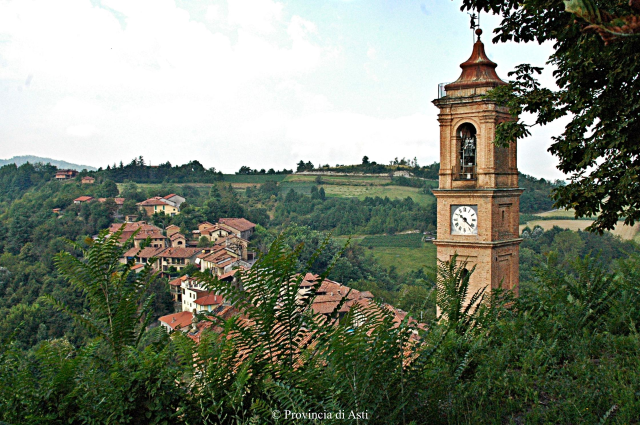Aramengo
Last update 25 March 2024
Everyone in Aramengo, in the natural amphitheater of the Lower Monferrato
Landscape
Aramengo lies in the northern part of the province of Asti.
It is 30 km from Asti, the provincial capital.
History
Aramengo gained, in Roman times, particular importance due to its control of the road that connected Asti to the Po valley.
The historical events of Aramengo, however, are closely linked to the feudal Radicati family.
Aramengo later passed under the rule of the Counts of Cocconato; it was then divided among the Marquises of Monferrato, the Dukes of Savoy and other feudal lords.
Administration
Food and wine and typical products
The village is renowned for its breeding of Piedmontese cattle.
Aramengo brings delicious cured meats, honeys, and truffles to the table, accompanied by Freisa and Barbera wines.
To be seen
Beneath the fortress where the castle once stood, the majestic parish church of St. Anthony Abbot (chiesa parrocchiale di Sant'Antonio Abate) towers.
Of particular interest are also the Church of Our Lady of the Snows (Chiesa della Madonna della Neve), the Church of St. George (Chiesa di San Giorgio), and the Shrine of St. Mary of Gonengo (Santuario di Santa Maria di Gonengo).
Outdoor enthusiasts should note the Giant Bench “Bonardina” (in the hamlet of Marmorito Santa Maria), “La Ficca”, a sulfur spring along the Riofreddo stream, and the art installation Finestra sul Marmorito and the Don Dino Puglisi viewing area in the hamlet of Canuto.
Insights
“Punti di Interesse”. Comune di Aramengo, www.comune.aramengo.at.it/it/point-of-interests. Last accessed Jan. 4, 2024.
Curiosity
The building that today houses Aramengo's municipal offices was built with housing functions in mind.
The structure, in fact, was the home of the wealthy Serra family.
Insights
“Municipio di Aramengo”. Comune di Aramengo, www.comune.aramengo.at.it/it/point-of-interest/713854. Last accessed Jan. 29, 2024.
Data source
- Synthesis / reprocessing information taken from the institutional website (current and previous versions) of the Municipality of Aramengo — https://www.comune.aramengo.at.it/
- Cover image source: Provincia di Asti — https://www.provincia.asti.it
Insights
BeWeb - Beni Ecclesiastici in WEB
https://beweb.chiesacattolica.it/
Catalogo Generale dei Beni Culturali
https://catalogo.beniculturali.it/
Centro Interuniversitario di Storia Territoriale "Goffredo Casalis"
https://www.archiviocasalis.it/
Ente Turismo Langhe Monferrato Roero
https://www.visitlmr.it
GAL Basso Monferrato Astigiano
https://www.monferratoastigiano.it/
-
Comune di Aramengo (AT)
https://www.monferratoastigiano.it/comune-di-aramengo-at/
la Cabalesta: Colline dell’arcobaleno
https://lacabalesta.it/
Wikipedia, l'enciclopedia libera.
https://it.wikipedia.org
See also
News from Aramengo
- Discover the latest news posted on the website of the Municipality of Aramengo
https://www.comune.aramengo.at.it/it/news
Events in Aramengo
- Discover the events posted on the website of the Municipality of Aramengo
https://www.comune.aramengo.at.it/it/events
Social network | Comune di Aramengo
Follow your Municipality on social media:

